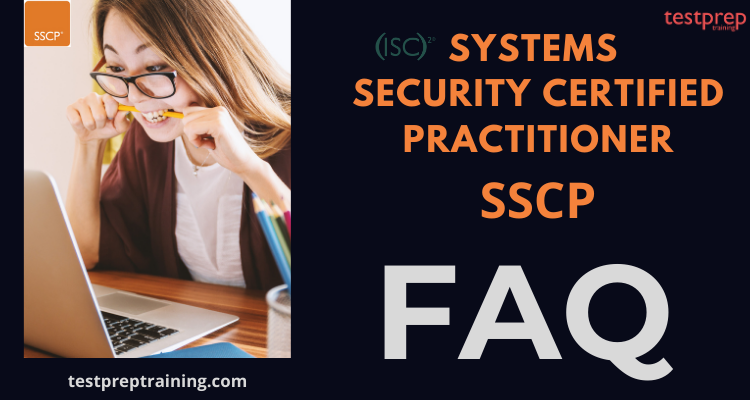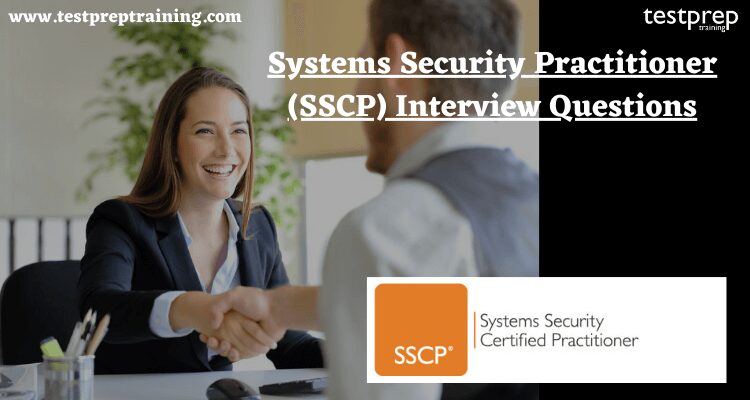SSCP – Systems Security Certified Practitioner
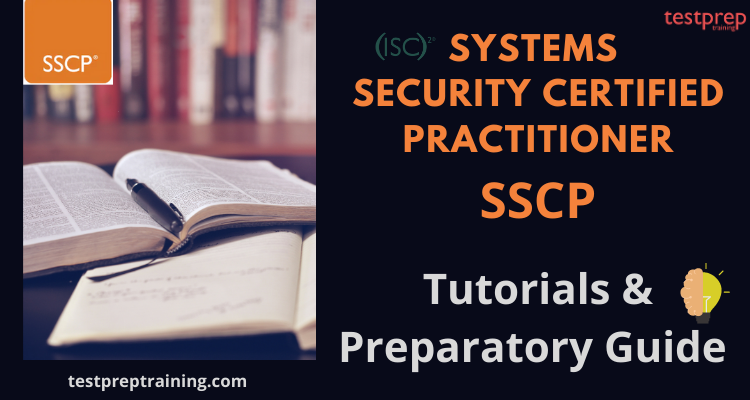
Globally recognized advanced security administration and operations certifications like the SSCP are a great way to enhance your skills and elevate your career. The Systems Security Certified Practitioner exam demonstrates your advanced technical skills and knowledge to implement, monitor and administer IT infrastructure using security best practices, policies and procedures established by the cybersecurity experts at (ISC)².
Preparing for the exam is a big task. We present you our Preparatory Guide and Tutorials that keep you loaded with the right resources and bridge the gap for your dream job. Lets have a loo at the exam details first.
What is SSCP Exam?
The Systems Security Certified Practitioner (SSCP) certification exam is suitable for individuals who possess demonstrated practical and technical expertise, along with hands-on security knowledge gained from operational IT roles. The SSCP Certification exam evaluates the candidates skills to execute, administer, and monitor IT infrastructure in accordance with information security policies and procedures. The SSCP exam also assists in enhancing cybersecurity knowledge, especially for individuals in operational IT roles or those establishing a foundation in information security.
Who should take the exam?
For candidates preparing for the Systems Security Certified Practitioner Certification Exam candidate must have –
- Minimum of one year of cumulative work experience
- One or more of the seven domains of the SSCP Common Body of Knowledge (CBK)
The Systems Security Certified Practitioner (SSCP) certification is well-suited for IT administrators, managers, directors, and network security professionals who play a pivotal role in the hands-on operational security of their organization’s vital assets.
SSCP Exam Details
The Systems Security Certified Practitioner exam consists of 125 questions present in the form of multiple-choice or multiple responses. The SSCP Exam time duration is 3 hours. The exam is available in the English, Japanese, and Brazilian Portuguese language.
| Exam Name | Systems Security Certified Practitioner |
| Exam Code | SSCP |
| Exam Duration | 4 hours |
| Exam Format | Multiple Choice and Multi-Response Questions |
| Exam Type | Practitioner |
| Number of Questions | 150 |
| Exam Status | Active |
| Exam Language | English, Japanese, and Brazilian Portuguese |
| Passing Score | 700 on a scale of (1-1000) |
Exam Prerequisites
The SSCP Exam Requirements are:
- Candidates must have a minimum of one year cumulative work experience in one or more of the 7 domains of the SSCP.
- A 1 year prerequisite pathway will be granted for candidates who received a degree (bachelors or masters) in a cybersecurity program.
Scheduling the Exam
For SSCP Exam Schedule:
- Create an account with Pearson VUE, the exclusive global administrator of all (ISC)² exams.
- Select the (ISC)² certification exam you are pursuing.
- Schedule your exam and testing location with Pearson VUE
SSCP Exam FAQ
To understand more about the exam policies and to clarify your doubts visit SSCP: Systems Security Certified Practitioner FAQs
Course Outline: SSCP
Understanding the Course Outline of the SSCP: Systems Security Certified Practitioner is of utmost importance when preparing for the exam. This exam evaluates your performance across its seven security domains. Devote enough time to each and every concept covered in this exam and tailor your study plan around it.
Domain 1: Security Concepts and Practices 16%
1.1 – Complying with codes of ethics
- ISC2 Code of Ethics
- Organizational code of ethics
1.2 – Understanding the security concepts
- Confidentiality
- Integrity
- Availability
- Accountability
- Privacy
- Non-repudiation
- Least privilege
- Segregation of duties (SoD)
1.3 – Identifying and implementing security controls
- Technical controls (e.g., firewalls, intrusion detection systems (IDS), access control list (ACL))
- Physical controls (e.g., mantraps, cameras, locks)
- Administrative controls (e.g., security policies, standards, procedures, baselines)
- Assessing compliance
- Periodic audit and review
1.4 – Documenting and maintaining functional security controls
- Deterrent controls
- Preventative controls
- Detective controls
- Corrective controls
- Compensating controls
1.5 – Participating in asset management lifecycle (hardware, software and data)
- Process, planning, design and initiation
- Development /Acquisition (e.g., DevSecOps, testing)
- Inventory and licensing (e.g., open source, closed-source )
- Implementation/Assessment
- Operation/Maintenance/End of Life (EOL)
- Archival and retention requirements
- Disposal and destruction
1.6 – Support and/or implement change management lifecycle
- Change management (e.g., roles, responsibilities, processes, communications, audit)
- Security impact analysis
- Configuration management (CM)
1.7 – Support and/or implement security awareness and training (e.g., social engineering/phishing/tabletop exercises/awareness communications)
1.8 – Collaborate with physical security operations (e.g., data center/facility assessment, badging and visitor management, personal device restrictions)
Domain 2: Understand Access Controls 15%
2.1 – Implementing and maintaining authentication methods
- Single/Multi-factor authentication (MFA)
- Single sign-on (SSO) (e.g., Active Directory Federation Services (ADFS), OpenID Connect)
- Device authentication (e.g., certificate, Media Access Control (MAC) address, Trusted Platform Module (TPM))
- Federated access (e.g., Open Authorization 2 (OAuth2), Security Assertion Markup Language (SAML))
2.2 – Supporting Internetwork trust architectures
- Trust relationships (e.g., 1-way, 2-way, transitive, zero)
- Internet, intranet, extranet, and demilitarized zone (DMZ)
- Third-party connections (e.g., application programming interface (API), app extensions, middleware)
2.3 – Support and/or implement the identity management lifecycle
- Authorization
- Proofing
- Provisioning/De-provisioning
- Monitoring, Reporting, and Maintenance (e.g., role changes, new security standards)
- Entitlement (e.g., inherited rights, resources)
- Identity and access management (IAM) systems
2.4 – Understand and administer access controls
- Mandatory
- Discretionary
- Role-based (e.g., subject-based, object-based, Privileged Access Management (PAM))
- Rule-based
- Attribute-based
Domain 3: Learn about Risk Identification, Monitoring and Analysis 15%
3.1 – Understand the risk management process
- Risk visibility and reporting (e.g., risk register, sharing threat intelligence, indicators of Compromise (IOC), Common Vulnerability Scoring System (CVSS), socialization, MITRE/ATT&CK model)
- Risk management concepts (e.g., impact assessments, threat modelling)
- Risk management frameworks (e.g., International Organization for Standardization (ISO), National Institute of Standards and Technology (NIST))
- Risk tolerance (e.g., appetite, risk quantification)
- Risk treatment (e.g., accept, transfer, mitigate, avoid, ignore)
3.2 – Understanding legal and regulatory concerns (e.g., jurisdiction, limitations, privacy)
3.3 – Perform security assessments and vulnerability management activities
- Risk management frameworks implementation
- Security testing
- Risk review (e.g., internal, supplier, architecture)
- Vulnerability management lifecycle (e.g., scanning, reporting, analysis, remediation)
3.4 – Operating and monitoring security platforms (e.g., continuous monitoring)
- Source systems (e.g., applications, security appliances, network devices, hosts)
- Events of interest (e.g., errors, omissions, anomalies, unauthorized changes, compliance violations, policy failures)
- Log management (e.g., policy, integrity, preservation, architectures, configuration, aggregation, tuning)
- Security information and event management (SIEM) (e.g., real-time monitoring, analysis, tracking, audit)
3.5 – Analyzing monitoring results
- Security baselines and anomalies (e.g., correlation, noise reduction)
- Visualizations, metrics, and trends (e.g., notifications, dashboards, timelines)
- Event data analysis
- Document and communicate findings (e.g., escalation)
Domain 4: Learn about Incident Response and Recovery 14%
4.1 – Supporting incident lifecycle e.g., National Institute of Standards and Technology (NIST), International Organization for Standardization (ISO)
- Preparation (e.g., defining roles, training programs)
- Detection, analysis, and escalation (e.g., incident communication, public relations)
- Containment
- Eradication
- Recovery (e.g., incident documentation)
- Post incident activities (e.g., lessons learned, new countermeasures, continuous improvement)
4.2 – Understanding and supporting forensic investigations
- Legal (e.g., civil, criminal, administrative) and ethical principles
- Evidence handling (e.g., first responder, triage, chain of custody, preservation of scene)
- Reporting of analysis
- Organization Security Policy Compliance
4.3 – Understanding and supporting business continuity plan (BCP) and disaster recovery plan (DRP) activities
- Emergency response plans and procedures (e.g., information system contingency, pandemic, natural disaster, crisis management)
- Interim or alternate processing strategies
- Restoration planning (e.g., Restore Time Objective (RTO), Restore Point Objectives (RPO), Maximum Tolerable Downtime (MTD))
- Backup and redundancy implementation
- Testing and drills (e.g., playbook, tabletop, disaster recovery exercises, scheduling)
Domain 5: Cryptography 9%
5.1 – Understand reasons and requirements for cryptography
- Confidentiality
- Integrity and authenticity
- Data sensitivity (e.g., personally identifiable information (PII), intellectual property (IP), protected health information (PHI))
- Regulatory and industry best practice (e.g., Payment Card Industry Data Security Standards (PCI-DSS), International Organization for Standardization (ISO))
- Cryptography entropy (e.g., quantum cryptography, quantum key distribution)
5.2 – Applying cryptography concepts
- Hashing
- Salting
- Symmetric/Asymmetric encryption/Elliptic curve cryptography (ECC)
- Non-repudiation (e.g., digital signatures/certificates, Hash-based Message Authentication Code (HMAC), audit trails)
- Strength of encryption algorithms and keys (e.g., Advanced Encryption Standards (AES), Rivest-Shamir-Adleman (RSA), 256-, 512-, 1024-, 2048-bit keys)
- Cryptographic attacks and cryptanalysis
5.3 – Understanding and implementing secure protocols
- Services and protocols (e.g., Internet Protocol Security (IPsec), Transport Layer Security (TLS), Secure/Multipurpose Internet Mail Extensions (S/MIME), DomainKeys Identified Mail (DKIM))
- Common use cases (e.g., credit card processing, file transfer, web client, virtual private network (VPN), transmission of PII data)
- Limitations and vulnerabilities
5.4 – Understanding public key infrastructure (PKI)
- Fundamental key management concepts (e.g., storage, rotation, composition, generation, destruction, exchange, revocation, escrow)
- Web of Trust (WOT) (e.g., Pretty Good Privacy (PGP), GNU Privacy Guard (GPG), blockchain)
Domain 6: Exploring Network and Communication Security 16%
6.1 – Understanding and applying fundamental concepts of networking
- Open Systems Interconnection (OSI) and Transmission Control Protocol/Internet Protocol (TCP/IP) models
- Network topologies
- Network relationships (e.g., peer-to-peer (P2P), client server)
- Transmission media types (e.g., wired, wireless)
- Software-defined networking (SDN) (e.g., Software-Defined Wide Area Network (SD-WAN), network virtualization, automation)
- Commonly used ports and protocols
6.2 – Understand network attacks (e.g., distributed denial of service (DDoS), man-in-the-middle (MITM), Domain Name System (DNS) cache poisoning)
6.3 – Managing network access controls
- Network access controls, standards and protocols (e.g., Institute of Electrical and Electronics Engineers (IEEE) 802.1X, Remote Authentication Dial-In User Service (RADIUS), Terminal Access Controller Access-Control System Plus (TACACS+))
- Remote access operation and configuration (e.g., thin client, virtual private network (VPN), virtual desktop infrastructure)
6.4 – Managing network security
- Logical and physical placement of network devices (e.g., inline, passive, virtual)
- Segmentation (e.g., physical/logical, data/control plane, virtual local area network (VLAN), access control list (ACL), firewall zones, micro-segmentation)
- Secure device management
6.5 – Operating and configuring network-based security devices
- Firewalls and proxies (e.g., filtering methods, web application firewall (WAF), cloud access security broker (CASB))
- Routers and switches
- Intrusion detection systems (IDS) and intrusion prevention systems (IPS)
- Network Access Control (NAC)
- Data Loss Prevention (DLP)
- Traffic-shaping devices (e.g., wide area network (WAN) optimization, load balancing)
- Unified Threat Management (UTM)
6.6 – Process of Securing Wireless Communications
- Technologies (e.g., cellular network, Wi-Fi, Bluetooth, Near-Field Communication (NFC))
- Authentication and encryption protocols (e.g., Wi-Fi Protected Access (WPA), Extensible Authentication Protocol (EAP), Wi-Fi Protected Access 2 (WPA2), Wi-Fi Protected Access 3 (WPA3))
6.7 – Secure and monitor Internet of Things (IoT) (e.g., configuration, network isolation, firmware updates, End of Life (EOL) management)
Domain 7: Understand Systems and Application Security 15%
7.1 – Identifying and analyzing malicious code and activity
- Malware (e.g., rootkits, spyware, scareware, ransomware, trojans, virus, worms, trapdoors, backdoors, fileless, app/code/operatin3 system (OS)/mobile code vulnerabilities)
- Malware countermeasures (e.g., scanners, anti-malware, containment and remediation, software security)
- Types of malicious activity (e.g., insider threat, data theft, distributed denial of service (DDoS), botnet, zero-day exploits, webbased attacks, advanced persistent threat (APT))
- Malicious activity countermeasures (e.g., user awareness/training, system hardening, patching, isolation, data loss prevention (DLP))
- Social engineering methods (e.g., SPAM email, phishing/smishing/vishing, impersonation, scarcity, whaling)
- Behavior analytics (e.g., machine learning, Artificial Intelligence (AI), data analytics)
7.2 – Implementing and operating endpoint device security
- Host-based intrusion prevention system (HIPS)
- Host-based intrusion detection system (HIDS)
- Host-based firewalls
- Application whitelisting
- Endpoint encryption (e.g., full disk encryption)
- Trusted Platform Module (TPM) (e.g., hardware security module management)
- Secure browsing (e.g., digital certificates)
- Endpoint detection and response (EDR
7.3 – Learn about Administering Mobile Device Management (MDM)
- Provisioning techniques (e.g., corporate owned, personally enabled (COPE), Bring Your Own Device (BYOD), Mobile Device Management (MDM))
- Containerization
- Encryption
- Mobile application management (MAM)
7.4 – Understanding and configuring cloud security
- Deployment models (e.g., public, private, hybrid, community)
- Service models (e.g., Infrastructure as a Service (IaaS), Platform as a Service (PaaS) and Software as a Service (SaaS))
- Virtualization (e.g., hypervisor)
- Legal and regulatory concerns (e.g., privacy, surveillance, data ownership, jurisdiction, eDiscovery, shadow information technology (IT))
- Data storage, processing, and transmission (e.g., archiving, recovery, resilience)
- Third-party/Outsourcing requirements (e.g., service-level agreement (SLA), data portability/privacy/destruction/auditing
- Shared responsibility model
7.5 – Operating and maintaining secure virtual environments
- Hypervisor (i.e., Type 1 (e.g., bare metal), Type 2 (e.g., software))
- Virtual appliances
- Containers
- Storage management (e.g., data domain)
- Continuity and resilience
- Threats, attacks, and countermeasures (e.g., brute-force attack, virtual machine escape, threat hunting)
Systems Security Practitioner (SSCP) Interview Questions
Are you wondering How To Study For SSCP Exam given the vast syllabus ? Just strap in as we have the perfect solution for you
SSCP Preparatory Guide
Getting certified for your knowledge and skills boosts your confidence and provides you with immense credibility. Preparation for an exam is one of the most essential yet difficult journeys. Further, the key to successfully pass an exam is by preparing right. Preparations demand consistency and determination. Also, there are plenty resources available. You must have the right information and tools to crack the exam. We present you our specially curated preparatory guide to help you achieve the Systems Security Certified Practitioner Certification.
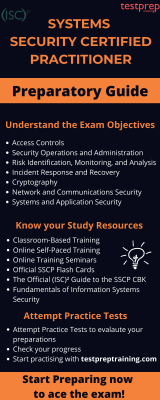
Step 1: Revise the Exam Objectives
Before heading towards your preparation journey, you must get yourself familiar with the main objectives of the Systems Security Certified Practitioner certification exam. (ISC)² provides the candidates taking it’s certification, with a well-structured Exam guide. Knowing the exam objectives is very important to get an insight into the exam. So visit the Official website of SSCP exam, to have a clearer view of the exam guide. A thorough analysis of the SSCP Exam Information will let you align yourself more deeply with the chief objectives if the exam. And hence, enabling you to gain the required command to earn your desired certification.
Step 2: Explore Study Resources
Cracking the certification becomes difficult when the set of resources chosen is not apt. You should be very careful while choosing the resources as they will determine actually how well you will pass the exam. There are numerous resources that can be used for preparation. Let us look at some of the available resources –
Enrol for SSCP Training
Training Courses provide an additional edge to candidates with their preparations. These Training Courses can strengthen your knowledge about the application of different concepts of the exam. ISC provides traiing in the following ways-
Classroom-Based Training
Official (ISC)² Classroom-Based Training for SSCP offers 5 consecutive days of interactive learning. In-person support from an (ISC)² Authorized Instructor is provided. This course provides hands on experience for the exam.
Online Self-Paced Training
The Online Training Course offers 180-day access to official course content. It provides Pre-recorded videos With engaging learning activities and reliable knowledge checks. These modern and exclusive training courses allow candidates to study on their own convenient schedule with interactive study material
Online Training Seminars
Led by an (ISC)² authorized instructor, the Official (ISC)² SSCP Training Seminar provides a comprehensive review of information security concepts and industry best practices. This training course will help candidates review and refresh their information security knowledge.
Learning Objectives
- Firstly, Understand the different Access Control systems and how they should be implemented to protect the system and data using the different levels of confidentiality, integrity, and availability
- Secondly, Understand the processes necessary for working with management and information owners, custodians, and users so that proper data classifications are defined. This will ensure the proper handling of all hard copy and electronic information as it is applied by the Security Operations and Administration
- Thirdly, The Risk Identification, Monitoring, and Analysis Domain identifies the how to identify, measure, and control losses associated with adverse events. You will review, analyze, select, and evaluate safeguards for mitigating risk
- Identify how to handle Incident Response and Recovery using consistent, applies approaches including the use of the Business Continuity Plan (BCP) and Disaster Recovery Plan (DRP) concepts in order to mitigate damages, recover business operations, and avoid critical business interruption; and emergency response and post-disaster recovery
- Also, Identify and differentiate key cryptographic concepts and how to apply them, implement secure protocols, key management concepts, key administration and validation, and Public Key Infrastructure as it applies to securing communications in the presence of third parties
- Further, Define and identify the Networks and Communications Security needed to secure network structure, data transmission methods, transport formats, and the security measures used to maintain integrity, availability, authentication, and confidentiality of the information being transmitted
- Moreover, The Systems and Application Security section identifies and defines technical and non-technical attacks and how an organization can protect itself from these attacks including the concepts in endpoint device security, cloud infrastructure security, securing big data systems, and securing virtual environments
Official SSCP Flash Cards
Study for the SSCP exam anytime, anywhere with Official SSCP Flash Cards! This unique, interactive way tests your knowledge of industry terms while providing you with immediate feedback about whether or not your answer is correct.
Flash Card content covers the following topics:
- Introducing Security and Aligning Asset Management to Risk Management
- Understand Risk Management Options and the use of Access Controls to protect Assets
- Cryptography
- Securing Software, Using Security Protocols and Securing Remote Users
- Networking and Role of the Hypervisor
- Wireless Networking, Telecoms, Cloud Configuration, Monitoring Systems and Endpoint Security
- Security Testing and Incident Handling
- Physical Security Managing Change and Personnel Training
Choose the Relevant Books

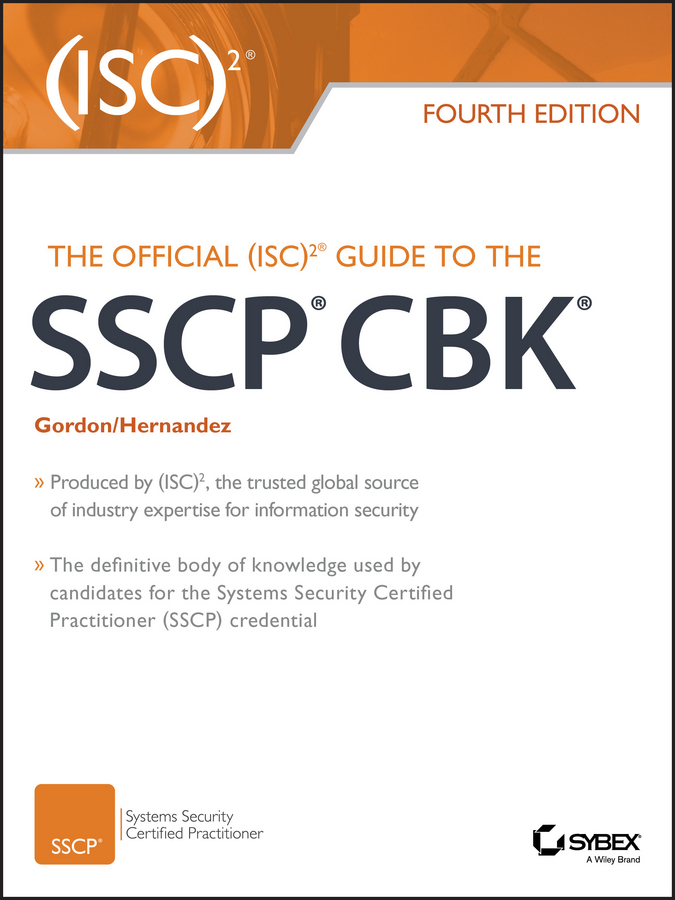

Preparation for any exam without books seems unreasonable and unproductive at the same time. So, you should also search for relevant and credible books by expert authors for your exam preparation. Books are a comprehensive source of information for candidates to prepare for the SSCP certification exam. You can access a detailed explanation of various concepts through books as well as SSCP Exam Tips. Here is a list of some books you must refer while preparing for the exam:
- Firstly, Fundamentals of Information Systems Security, Third Edition by David Kim and Michael G. Solomon. Publisher: Jones & Bartlett Learning.
- Secondly, The Official (ISC)² Guide to the SSCP CBK, Fourth Edition by Adam Gordon and Steven Hernandez.
- Thirdly, SSCP Systems Security Certified Practitioner All-in-One Exam Guide
Join an Online Community
Joining an Online Community is certainly an ideal way to know your actual stand in the competition. Here, you can interact with your competitors, and keep yourself focused. This will provide you the right exposure to appear for the exam, ensuring an increase in your expertise. This will not only be beneficial in the exam prep but will also help get your doubts cleared and get you trained well, for success.
Step 3: Self Evaluate with Practice Tests
Finally, we’re on the last step for the preparatory guide. Further, this final step will offer candidates the exact insight of the topics in which they’re lacking. So, make sure you’re going through SSCP Exam Practice Questions after you have gone through the entire syllabus. Most importantly, all the practice tests are designed to encounter the real exam environment around you. However, practice papers can be from various sources. Above all, remember the more you test yourself the better you’re going to become. So, Self evaluate your preparations with practice tests now!

